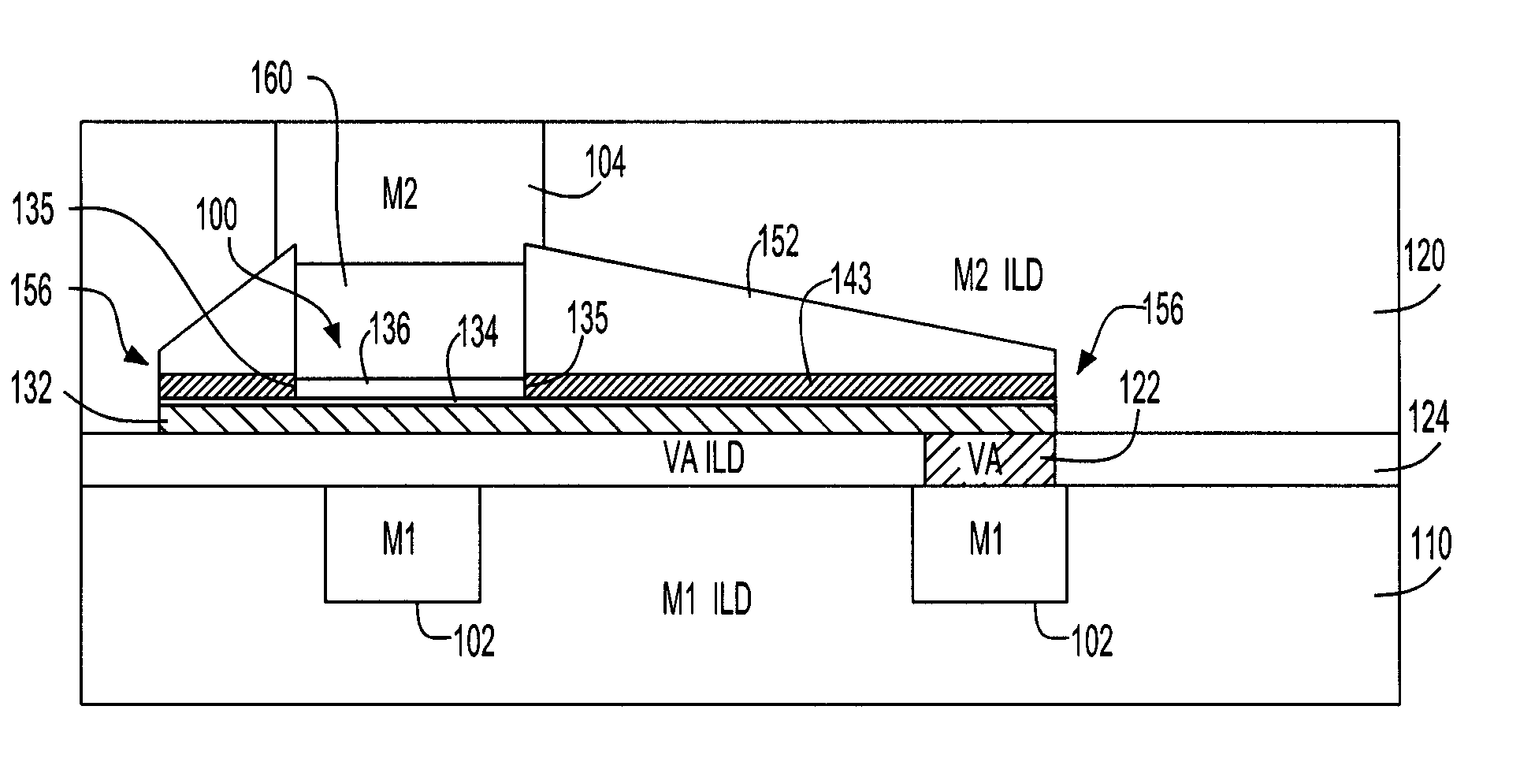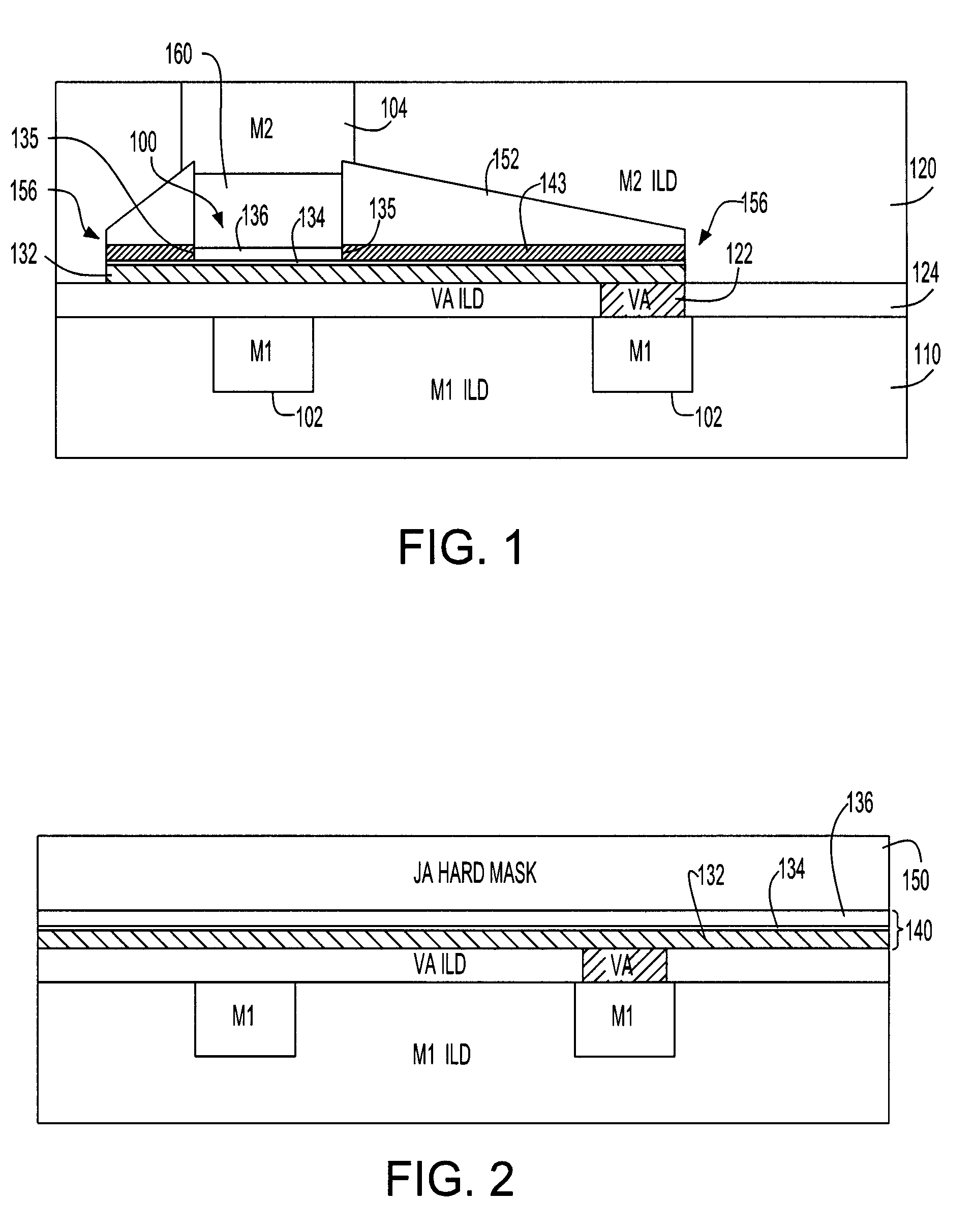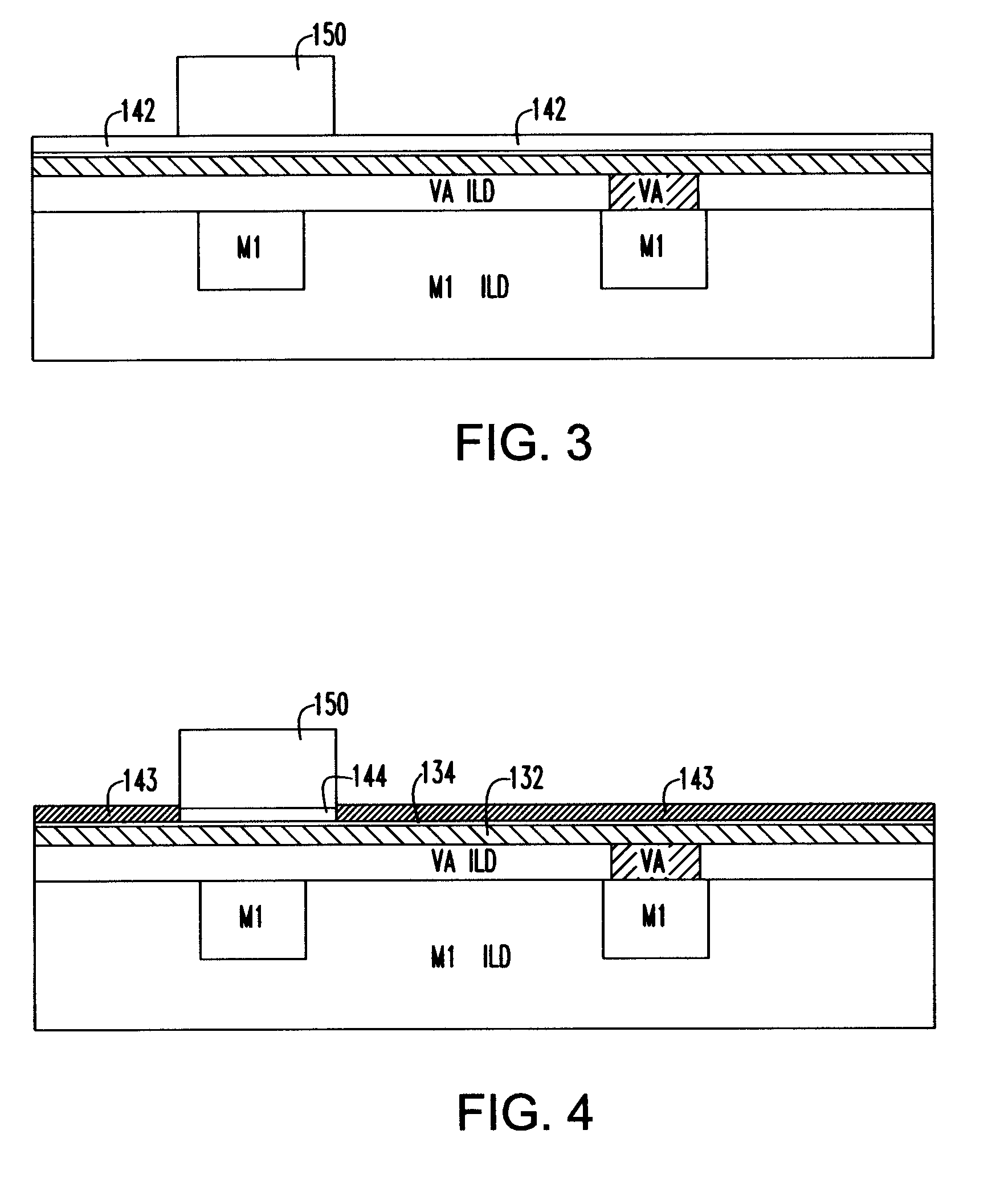Structure and method of patterning a magnetic tunnel junction stack for a magneto-resistive random access memory
- Summary
- Abstract
- Description
- Claims
- Application Information
AI Technical Summary
Benefits of technology
Problems solved by technology
Method used
Image
Examples
Embodiment Construction
[0014]FIG. 1 is a cross-sectional view illustrating the structure of a patterned MTJ storage element 100 and its interconnection to M1 and M2 conductive lines. The MTJ 100 includes a pinned layer 132, a tunnel barrier layer 134 and a free layer 136. Each of these layers 132, 134, and 136 can include one or several layers which work together to enhance device performance or manufacturability. The free layer 136 is adjoined at first edges 135 of the MTJ by portions 143 of the free layer material that has been purposely inactivated. Preferably, the free layer 136 is also adjoined by the same type of inactivated material at second edges (not shown) in front of and in back of the MTJ 100, (the second edges not being visible in the particular cross-section shown), such that the MTJ 100 is surrounded by the same type of purposely inactivated material. The portions 143 of inactivated material extend to outer edges 156 of the patterned structure beyond the MTJ 100. The pinned layer 132 and t...
PUM
 Login to View More
Login to View More Abstract
Description
Claims
Application Information
 Login to View More
Login to View More - Generate Ideas
- Intellectual Property
- Life Sciences
- Materials
- Tech Scout
- Unparalleled Data Quality
- Higher Quality Content
- 60% Fewer Hallucinations
Browse by: Latest US Patents, China's latest patents, Technical Efficacy Thesaurus, Application Domain, Technology Topic, Popular Technical Reports.
© 2025 PatSnap. All rights reserved.Legal|Privacy policy|Modern Slavery Act Transparency Statement|Sitemap|About US| Contact US: help@patsnap.com



